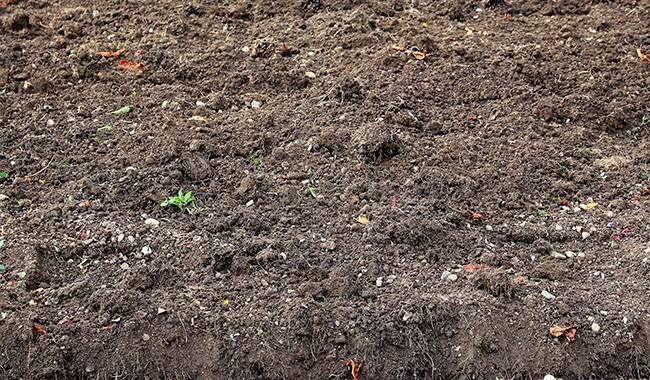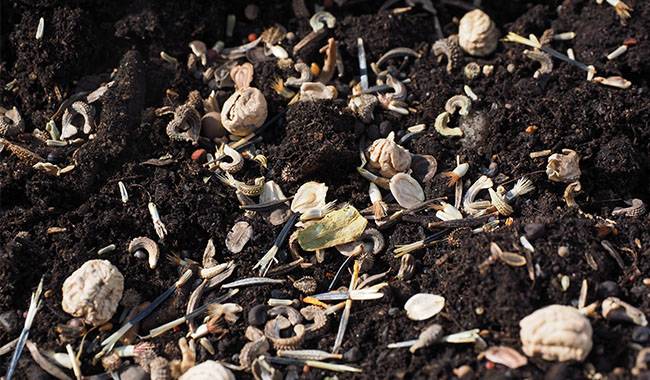
Nowadays, more and more gardeners tend to grow vegetable crops exactly according to the seeding method, and the seedlings, as well as the soil are prepared by themselves. This is true because if you learn how to do it, you will be able to grow good seedlings and save money in both areas.
Obviously, the seedling soil should meet the needs of the particular culture: one is suitable for rich and moist soil (cucumbers) and the other prefers drier and leaner soil (tomatoes).
Some specimens generally prefer soils with a sour taste and, in general, there are no universal soils. However, the basic requirements for nursery soils remain.
WHAT SHOULD THE SOIL BE LIKE FOR SEEDLINGS?
Firstly, it is moderately fertile, containing useful microflora and all the necessary nutrients. Secondly, it is a balanced soil from the point of view of mineral content and organic matter. And, in any case, it should be in a form that is accessible to plants.
In addition, the ground used for seedlings must be permeable and breathable, capable of retaining moisture over time. Ecological purity, neutral pH – all of these are unwritten laws, along with, of course, the lightest, structurally crumbly, free of clumps and foreign inclusions.
Speaking of clods: do not leave clay clods in the soil, as they compact the soil, and various plant residues, which absorb nitrogen in decomposition and overheat the soil, in which case the roots of the seedlings will die. The soil should not contain seedlings of weed seeds, worms, and larvae of various insects.
Such soil is not to be found in gardens or nearby woods. Typically, it is a multi-component composition, usually consisting of peat (usually lowland), humus, river sand, and 50% of good old soil in equal parts.
WHERE IS THE BEST PLACE TO GET A SOIL MIX?
For some reason, many people believe that what is ideal in every way is forest soil. However, this is not the case; it is only one component, a base, but a good one (for tomatoes, for example). It is best to prepare forest soil at the end of the gardening season so that it does not freeze when you take your shovel to the forest.
Use only forest soil from healthy trees and avoid oaks, chestnuts, and willows that contain a lot of tannins. Take deciduous soil, but not pine soil: Coniferous soils tend to be too acidic for young seedlings.
Can I also use soil from the seedbed? Yes, but take precautions. For example, do not take soil from where you have grown pumpkin crops or cucumbers for cucumbers and squash, as well as if you are growing tomatoes, do not take soil from after tomatoes, potatoes, and other eggplant crops.
A FEW WORDS ABOUT THE OFTEN TALKED ABOUT SEEDLING SOIL

You can buy soil for seedlings in the store – there are many packages with soil. To check, you can take one: yes, the soil is light, nutritious, and easily moistened, and the package says that it has added deoxidizers, various macro-nutrients, and available trace elements. All of these come out conveniently and are not necessarily very expensive.
However, there is a downside to ready-made blends – it’s an unknown amount of nutrients, to begin with. Obviously, they are present, but how much? Next – the acidity of the soil. It is usually between 5.0 and 6.5, which is a big difference. Instead of peat, which may be peat powder with no expiration date on the package, etc., it is peat.
Recipe for nursery soil using a ready-made mixture: we take a good purchased soil and mix it in equal proportions with garden soil or turf soil, adding 100 g of common chalk (deoxidizer) per 10 kg. Why is this so? We know from experience that even expensive purchased mixtures are often very acidic peat.
What is turf soil? It is, in fact, a substrate formed by a long process involving stacking multiple layers of sod and watering the latter with cowpeas. Two consecutive seasons of wetting with this “nectar” before you can proudly say that it is quality turf soil lying on your plot.
TECHNIQUES FOR MAKING GOOD QUALITY FOR SEEDLINGS SOIL
It’s easy: river sand, low-lying peat, soil from the forest or garden, and all in equal amounts. Believe me, it is more suitable for eggplant, cabbage, pepper, and tomato seedlings.
Don’t have peat? Then add humus, and that’s even better because you eliminate the possibility of making mistakes and adding sour peat (like upland). If you want to do quite well, then add 100 grams of wood ash, soot, or stove ash per kilogram of soil.
In general, as we have already written above, the quality of soil used for seedlings depends on the culture. For example, cabbage, tomatoes, bell peppers, eggplants, cucumbers, watermelons prefer the following components: about 35% soil (forest, garden), humus (up to 50%) or peat (about 30%), river sand (the rest, up to 100%). For cabbage sprouts, you can increase the share of river sand to 40%, while tomatoes and in forests and gardens, by 70% or even 100% of the soil grow perfectly! This would be a good example.
Remember that seedlings do not need nutritious soil, but overgrown seedlings need more nutritious soil.
Of course, all components need to be ready in the fall and the soil needs to be prepared for the last time in the fall. Why? Because the components will combine and the seedlings will be at their best in the spring. The best way to store self-growing soil for seedlings is closed polyethylene bags.
Now let’s deal with the important issue of sterilizing the soil.
HOW TO DISINFECT THE SOIL OF YOUNG PLANTS
Freeze the soil of seedlings
In my opinion, this is the most ideal and gentle way out of a dozen, probably. We prepare the soil mixture, stuff it with a cloth bag, and put it on an unheated balcony, or in or under a shed. For the first 100 days or so of the germination period, you can bring the bags inside and let them thaw completely, keeping them in this state for a week. Then in the cold again relentlessly – so that both weed seeds and various larvae, as soon as they begin to awaken, we eliminate them.
The disadvantage of this method – it does not prevent all diseases, so it is better to soak the soil with manganese (light red) before planting.
Calcination of seedling soil
In this case, the soil is heated at temperatures below 212°F (100°C), but in this way, all useful microflora are guaranteed to die as well. Dead, sterile soil is formed.
Disinfection of the soil with manganese
It was, is, and will always be a common means of soil disinfection (within reason). A few weeks before planting, make a solution of raspberry manganese – usually, 5 grams per bucket of water at about 104°F (40°C), mix well, sprinkle on the soil and cover immediately with aluminum foil.
A few days before planting (three to four days), repeat everything again.
Mustard powder
People may be allergic to it, but it can protect the soil from some troubles – from all kinds of bacteria and viruses, fungi, and even nematodes and thrips. To solve all the problems at once, you need to generously scoop out a tablespoon of mustard powder from the package and mix it with five liters of soil. By the way, you can add my favorite ammonium nitro phosphate to the same volume of soil in the amount of 5-7 grams.
Biological methods of soil preparation
Completely harmless preparations can disinfect the soil and they are safe not only for plants but also for humans and the environment in general. These are the so-called bio fungicides. How do they work?
Suppose we create a soil according to any of the above methods, then we dilute the preparation according to the instructions and sprinkle it on the soil. Its bacterial cultures begin to actively clean the soil you created of all sorts of nasties, including even pathogens of various fungal and bacterial diseases. At the same time, the composition of these drugs can be useful humus, which can be considered a double benefit (but also double price).
These preparations relax the soil, reducing or completely eliminating its toxicity, and make it unnecessary for you to sprinkle with boiling water, freeze or heat the soil.
Most interestingly, once you have prepared the soil and decided to treat it with one of the disinfectants, you should read the instructions and follow them to the letter. For example, the well-known Trichodermin: just one gram is enough to disinfect a whole liter of soil. trichodermin can be applied just a few days before sowing seedlings, for example, as early as three or four days before.
EM (Effective Microorganisms) preparations: Don’t leave them out either, they contain a large number of microorganisms that are beneficial to the soil and plants. And they can be used as a final step in preparing the soil for the production of young plants. Sometimes, even tired soils seem to rejuvenate and transform after the use of EM (Effective Microorganisms) preparations.
Here is an approximate method of use: store thawed ready-made seedling soil in cold storage, which needs to be poured into this preparation about a month before sowing, and then simply fills the containers for seedlings as usual and cover them with aluminum foil. The main thing is that the ratio of preparation to soil is negligible, only 1 to 500, while the effect is sometimes very obvious.







